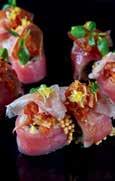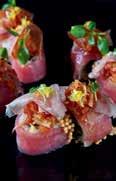





























Welcome Santa and Mrs. Claus to the shores of Hood Canal to our favorite NW Tradition - Holidays on Hood Canal. Join us from November through December for all the Holiday fun!





Hop on by for a candy-themed Museum take-over, included with admission!
NOV 18, 2025 – JAN 25, 2026
Head to the Hyatt Regency Bellevue for our annual Gingerbread Workshop event!
NOV 28, 2025: 1–3pm & 5–7pm
NOV 29, 2025: 10am–noon & 2–4pm









KidsQuest 20th Birthday Bash
Celebrate two decades of play with us!
DEC 12, 2025: 3–7pm


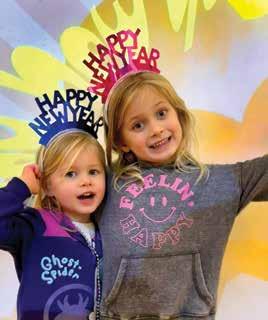
New Year’s Eve Countdown
Ring in the New Year at 10am, noon, 2pm & 4pm!
DEC 31, 2025: 9:30am–5pm
• Pick apples in the Tot Orchard
• Splash in the Stories of Water exhibit
• Enjoy FREE daily programs like Story Time, Weekend Playshops, and more


• Get a membership for a full year of play!
• Host a birthday party or special event
• Free & discounted tickets available! Scan for tickets and more info!


•Enchanting Events
Characters




































































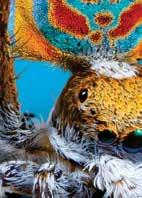




















































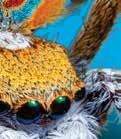
































































Snow Much Fun at Loup Loup
A mom’s tale of slopes, skis and family bonding just outside of Winthrop
Explore The Last Frontier
A cruise convert dishes on why sailing through Alaska’s Inside Passage is worth it
Glow Big or Go Home
These dazzling light displays brighten the Big Dark all season long
Go on a Culture Crawl
Who needs pubs? These immersive local experiences bring the world to families
Dig In at the Sand Garden
The state’s largest indoor sandbox promises creative play and parent downtime





Immersive light displays will have you looking forward to an early sunset

















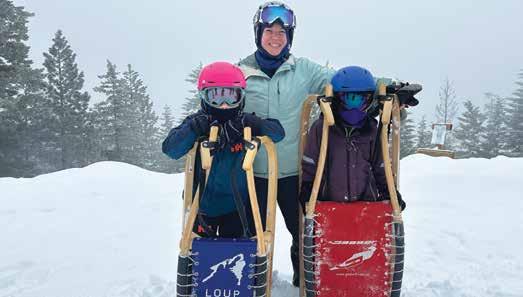
Nestled between Twisp and Okanogan in Washington’s Methow Valley lies a winter wonderland where kids ski free, hot chocolate won’t break the bank and non-skiers also have their pick for winter fun. Loup Loup Ski Bowl is one of Washington’s hidden gems for families seeking a relaxed, friendly and affordable winter getaway. Friends of mine had been singing Loup Loup’s praises for years, and last winter we finally made the trip. Within minutes of hitting the slopes, we understood exactly why families treasure this lesser-known mountain destination.
History of Loup Loup
Loup Loup Ski Bowl has been a beloved local ski hill for generations. Skiing at “The Loup” began in the 1930s, when local enthusiasts hiked up the mountain and made their own runs. By the late 1940s, the community rallied to establish a more formal ski area. Over the years, volunteers, donations and local partnerships led to the installation of the first rope tow, followed later by a Poma lift, and finally a chairlift in 1998 that transformed the mountain into a small but vibrant ski destination. You can see red and blue plaques on the lift tower and chairs dedicated to the many volunteers who transported and installed the chairlift, piece by piece, to its new home.
Unlike many ski areas that grew into corporate resorts, The Loup has remained a nonprofit community-run ski hill. The Loup Loup Ski Education Foundation, established in 1982, still prides itself on being an education nonprofit that runs a ski hill. Local skiers, volunteers and supporters continue to sustain its operations, ensuring it remains affordable and family-friendly.
Today, Loup Loup Ski Bowl features 16 cut runs, 1,240 vertical feet, groomed Nordic trails, a luge course, tubing and a cozy lodge. With its rich history of grassroots support, The Loup is more than just a ski hill; it is a reflection of the region’s community spirit.
Why Loup Loup should be in your winter plans
As a mom who is often solo with two kids on the slopes, I particularly value a small, affordable, easy-to-navigate ski locale like Loup Loup. Here is what I loved and why I plan to return.
• Kids 15 and younger ski free. Thanks to incredible community-led fundraising, Loup Loup now offers free lift tickets to anyone 15 and younger when accompanied by a paying adult. When we skied Loup Loup last year, I was thrilled that kids 12 and younger ski free, but something even better was in the
works. A big, hand-drawn fundraising tracker hung proudly in the lodge to show off the success of community efforts in increasing the age to 15 for the 2025/2026 season.
• Parking is free and walkable. At ages 7 and 10, my kids now carry their gear from the car but when we ski other places, it’s usually a decision between paying for a locker, carrying lunches in my backpack or facing the trek back to the car midday. Not at Loup Loup. There is one main parking lot immediately adjacent to the ski hill here. Parking is free, and even its farthest spots are walkable to the ticket booth, gear rental building and lodge; no need to plan in shuttle times or schlep everything you need for the day in one trip!
• Food is affordable. Hot dogs for close to $5 are unheard of at most ski resorts, but not so at The Wolf Den Day Lodge. You’ll also find breakfast sandwiches, baked potatoes, soup and much more, all reasonably priced and good quality. Coffee, beer and wine are also sold and the après-ski happy hour menu gets a bit fancier with items like spring rolls and fried pickles. How about some baconwrapped dates for around $10? At these prices, I was happy to meet requests for hot chocolate with an enthusiastic “yes” throughout the day.


Enjoy cookies, hot chocolate, seasonal décor, a train ride, photos with Santa inside a restored coach, and every child gets a gift from Santa himself!
• November 29 & 30
• December 6 & 7
• December 13 & 14
• December 20 & 21
Tickets still available!
continued from page 7
• Lift lines are reliably short. Long lift lines can really put a damper on an otherwise fun day but not at Loup Loup. Here you’ll find one quad chairlift, a Poma lift and one rope tow. Lines move quickly, and lifties send you off with a smile. The Poma — a seat much like you’d find on a zip line, connected to a large cable above — was new to us and a great thrill as it zipped us up the “bigger than a bunny hill” Jr. Poma. When you go, cut across the hill at the top to the woods and be on the lookout for the woodland creatures hidden along the trail.
• There’s plenty of beginner terrain. From the rope-tow beginner “bunny hill” to multiple runs off the lift, Loup Loup offers 16 official runs (with plenty of make-your-ownadventure tree trails) with seven rated as “beginner.” I love how this gives new skiers plenty of options to explore new terrain within their skills. Both of my kids are proficient skiers but one prefers to craft his own routes in the trees while the other likes to repeat the same run and practice side jumps to perfection. Loup Loup suited us well because options were plentiful off the same base run.

• All routes end in a centralized location. Loup Loup feels particularly accessible to families because all activities start and end in the same place. If you have older kids who want a bit of freedom or are visiting with a big group, Loup Loup is ideal because reconnecting is so easy. My 10-year-old loved heading up the chairlift with friends, while my 7-year-old was thrilled to be left to his own devices to do as many loops on the Jr. Poma hill as he wanted. At one point, another mom and I sat in Adirondack chairs facing the hill and had an entire uninterrupted conversation while we watched our kids ski to their hearts’ content. Imagine!
• Activities for non-skiers. Loup Loup offers tubing, oneof-a-kind luge sledding and Nordic (cross-country) skiing for non-skiers or for those who just want to experience
more of the mountain. We didn’t make it to the tubing hill or test out the Nordic trails during our visit, but the luge is something not to be missed.
More to enjoy beyond alpine skiing
If you aren’t a big downhill ski family, there are other options to keep you busy for a day or more.
Bear Mountain Luge Sledding, the only natural alpine luge in the Pacific Northwest, offers a truly unique thrill for even the most adventurous families. This is a one-of-a-kind experience that you can only do in one other place in the U.S. (Michigan). We absolutely loved this experience. During the 2 1/2-hour adventure, you’ll receive expert instruction and practice before taking an open-air snowcat trip up the mountain to sled down progressively speedier and longer runs over 2.5 miles, back to the base.
It costs $50 per person, and children ages 6–9 must ride with an adult. My then 9-year-old desperately wanted his own sled and the instructors let him test out a solo sled
with success. There is a learning curve, but the instruction was excellent. This is everything you want sledding to be, and by the end you’ll be begging for another run down the mountain. While walk-up space may be available, it is highly recommended to book ahead online to ensure your slot.
Wild Wolf Tubing Hill is a fun and easy option for kids, open on weekends and select holidays. It costs $13 per person, which includes the tube rental and access to the tubing hill. Riders must be at least 42 inches to use the hill. Only tubes provided on-site are permitted.

Nordic skiers can find groomed cross-country trails at both North Summit (shared with luge sledding) and South Summit (50 km of dog-friendly terrain nearby). Pay a $15 per day fee






continued from page 9
for North Summit trail access, or $27 per day for a Sno-Park Permit for South Summit routes. Season passes are also available.
In winter conditions, plan on five to six hours of drive time from downtown Seattle to Loup Loup via 90 to 97 north toward Wenatchee/Chelan. From 97 take state Route 20 west to the top of Loup Loup Pass, turn right onto NF-4200/100, and drive 1.5 miles to the main parking lot.
The closest towns include Okanagan (18 miles) and Omak to the east or Twisp (14 miles) and Winthrop to the west. Loup Loup partners with the Best Western Plus in Omak or Casia Lodge and Ranch in Twisp for lodging discounts. Mention your ski plans for current deals.
If you go alpine skiing at Loup Loup …
Hours of operation: Once Loup Loup opens for the season, hours of operation are Wednesdays and Fridays–Sundays, 9 a.m.–4 p.m.
Lift tickets: Kids 15 and younger ski free with the purchase of an adult lift ticket. Adult tickets cost $80 per day or $60 for a half-day ticket purchased after noon. Loup Loup offers teen, senior and military discounts, and you can save $5 per ticket when you book online at estore.skitheloup.org.
Gear rental: Full gear rental starts at $33 per day for youth, up to $58 per day for an adult premium ski or snowboard package. All gear can be rented à la carte.
Lessons: Loup Loup offers 60–90 minute group lessons for $50 per person on Wednesdays, Saturdays and Sundays at 10 a.m. Private and semi-private lessons are available for ages 6 and older for $100 per hour ($50 per hour per additional person). Kids ages 4–6 can take a one-hour private lesson for $50. It is highly recommended that you book lessons at least three days in advance. We didn’t take lessons during our visit, but given the friendly and helpful nature of every single person we interacted with, I wouldn’t hesitate to book a lesson in advance of a future visit. Find up-to-date information on opening times and prices at www.skitheloup.com.
Leighton Thomas is a Kitsap-based mom of two. When she’s not adventuring with her kids, Leighton is a part-time education consultant and outdoor enthusiast. Follow her adventures on Instagram: @everyday.adventure.and.joy

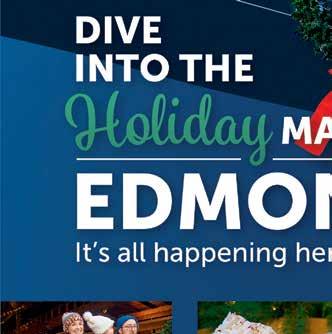













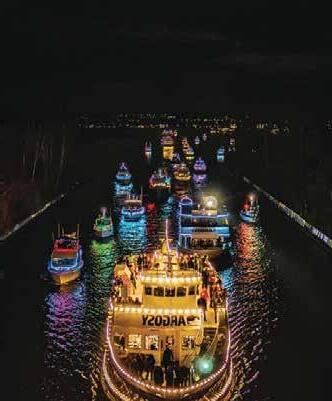































A cruise convert’s true confession about sailing to Alaska with her three kids

Going on an Alaskan cruise has been on my travel bucket list ever since we moved to Seattle more than two decades ago. Yet, every time we’d sit down to plan a family vacation, sailing Alaska’s Inside Passage would lose out to the allure that pools, palm trees and that much-needed vitamin D warmer destinations offer.
We’d reason that Alaska was just the Pacific Northwest but a little further north; that it was more of the same. After all, we’ve got majestic snowcapped peaks here. We’ve got whales. And at least once a year, a bear lumbers into our Gig Harbor neighborhood and puts on a Ring camera show as good as anything you’d see on National Geographic.
What were we really missing?
Turns out, a lot.
While it’s true that Alaska’s expansive landscapes mirror what we find in our own backyard, after experiencing its thrilling adventures and vibrant, storied cultures firsthand, my only regret is that we didn’t take an Alaskan cruise sooner.
From the minute we set out for our weeklong vacation aboard the Discovery Princess, I was reminded of Emerson’s quote touting the benefits of the metaphorical journey over the
destination. In a world of family vacations where getting there is often marred by modern travel woes — canceled flights, endless delays, carry-on luggage limitations — even the start of this journey was surprisingly painless. It started with a quick drive to Pier 91, followed by expertly organized lines that moved passengers through the boarding process with conveyor-belt efficiency. Before we knew it, my kids and I were walking up the gangway, posing for pictures like movie stars on the red carpet and stepping into the ship’s stunning three-story Piazza.
Watching my 7-year-old splash in the pool while my two teens noshed on margherita pizza from the poolside restaurant as we waited to disembark from Seattle on a sunny summer day sure beat sitting in cramped coach seats, waiting to take off after slogging through SeaTac. By the time the dancers were setting up for the sail away celebration and the cruise director Jayson delivered his welcome, I had fully embraced “getting there” as a major perk of cruising.
Our Inside Passage itinerary
Everything you’ve heard about an Alaska vacation is true: It’s an untamed adventurer’s paradise. But beyond zip lining through rainforest canopy, bumping along UTV trails or landing on a glacier after a scenic helicopter ride, it’s surprisingly inclusive for visitors of all ages (yep, that adage about old people cruising to Alaska is not a myth), including families with young children. In each port, we found more than enough excursions that piqued my kids’ interests — even my hard-toplease teens. After weighing our options, we focused our adventures on Alaska’s natural wonders and varied cultures over heart-pumping thrills.
Ketchikan
Even before we disembarked, my son was sold on this quintessential Alaska town, with its low-hanging clouds and colorful houses stacked on hillsides hugging the waterfront. Downtown is a mélange of shops, restaurants and services that cater to the tourists who keep the town afloat. Its history is a mashup — Native culture meets lumberjack — reflected in its architecture, outdoor art installations and the local museum: Tongess Historical Museum.
During our day in Ketchikan, we toured Totem Bight State Historical Park in the morning and watched the Great Alaskan Lumberjack Show in the afternoon. As our tour bus drove out of town we collected the fascinating facts our tour guide threw out like little gold nuggets from a mine. An easy pick for families, the leisurely tour of the 22-acre park leads visitors to a collection of restored totem poles and a historic clan house
along mostly flat forested trails. Our guide regaled us with the stories “told” on each pole, peppering us with facts about how each was originally made, then restored and now maintained. He assured me local tour companies worked with the Tlingit and Haida Indian Tribes to make sure the stories and tribal histories being shared are culturally sound.
The 2 1/2 hour tour was just right for my three kids, who were ready for the second half of the day after grabbing lunch and spending their hard-earned money in the town’s souvenir shops. Our morning, steeped in native history, was replaced with a logging history lesson woven in between an impressive display of lumberjack skills and comedic one-liners during the live competition. Don’t expect an over-the-top production here. While it was thoroughly enjoyable (audience members cheered in agreement), the show exemplifies the Alaskan spirit — making the best of what you’ve got. But if you want a glimpse into lumberjack culture, this is certainly an entertaining way to get it.
Other recommended excursion: We heard from other passengers that the wildlife bear watching in Ketchikan is top notch.
The Endicott Arm scenic cruising leg is an early-start day. Set your alarm for around 5 a.m. when the ship enters the fjord on its way to the Dawes Glacier. If ever there was a reason to book an oceanview stateroom, this is it. Watching icy blue glacier chunks floating by from your own private balcony in your pajamas while a naturalist livestreams on TV is what an Alaskan cruise is all about. Plus, if you’ve got kids who like to sleep in, this setup means everyone wins — you sightsee, they sleep. It’s pure vacation magic.
Once docked in the state capitol, passengers have their pick of essential Alaska activities: glacier viewing, whale watching or dog sledding. The Mendenhall Glacier is one of the biggest draws here and it’s just over 10 miles outside of town. Families can fly to the glacier, boat to the glacier, hike to the glacier or simply view it from any number of points in Tongass National Forest. In short, there’s no wrong way to glacier.
My kids were happy to see it from the many trails and photo-op spots in and around the national park visitor center. Our 90-minute stop here was just enough time to learn about climate change’s effect on the glacier, snap pics and scope the gift shop offerings. If I thought my youngest could rally, we would have hiked the short trail out to Nugget Falls for even more nature vibes.


continued from page 15
An undeniable highlight of our trip, even for seasoned whale watchers like us, was our afternoon in Auke Bay. No matter how many times I’ve seen it, watching humpbacks breach always seems a bit miraculous to me. My 7-yearold spent her time on the ship waffling between sneaking doughnut bites set out by the crew and scanning the horizon, desperate to be the first to spot a fluke or flipper break the surface. The onboard naturalist’s familiarity with the area wildlife was impressive, and the fluke guide helped us identify many of the whales we saw that day, including a crew favorite: a mom who returns every year with a new calf in tow. Seeing the pair breach together was like spotting a double rainbow. After a few hours of whale watching, we made our way back, our camera storage space that much smaller.
Other recommended excursion: One couple said the glacier helicopter tour was well worth the splurge.
Once a bustling hub of the Klondike Gold Rush, Skagway is steeped in its history. Stroll the charming downtown boardwalk that seems ripped from the pages of history, or ride the scenic White Pass Railway (like we did) that was used to transport mining supplies to the Yukon back in the day. The changing landscape and stunning tundra at the summit are photo-worthy. But keep in mind timing as food is not available for purchase on the train (depending on the excursion) and food and beverages aren’t allowed to be taken off the ship either.
Once we reached the summit, we hopped aboard a shuttle bus and headed further east, toward the Yukon. Along the way, we reveled in the mountains and spotted a pair of bears before reaching our final destination for lunch. Our return stop in the Yukon — Carcross (short for Caribou Crossing) — was just what my kids needed after a long day of sightseeing. The playground in the center of town kept my youngest busy while my teens grabbed ice cream and ducked in and out of the cutest shack shops I’ve ever seen.
Other recommended excursion: Another passenger raved about the dog sled experience.
During our tip, I often caught myself pondering the continual juxtapositions of this vacation: spotting glaciers wedged between forested peaks from the comfort of a steamy hot tub; shedding casual layers after a day of whale watching for formal wear on Dress to Impress night so you look great in your picture with Captain Tony next to the cascading champagne tower; packing puffy coats alongside swimsuits and a black cocktail dress next to wool socks. Our trip was a study in the spectrum. But it was a tension my family welcomed every night we’d retire to our ornate floating hotel after a day of rugged adventuring.
With two of our seven days spent at sea, we had plenty of time to make the Discovery Princess our home, starting with our cabin. Cruise ship cabins are notoriously small on space and short on little luxuries families have come to expect from even moderate hotels. But we found our deluxe balcony stateroom had just what we needed for our family of four, including a sitting area that converted into sleeping bunks each night, thanks to our amazingly attentive cabin steward. The bathroom was small, but we found that even with two teens it worked fine for us. And the balcony gave us that much more wiggle room when we needed space. But with an entire ship boasting sun-up to sun-down programming to enjoy, we didn’t spend too much time in our cabin.

In my experience, feeding kids on vacation is always a hassle. Feeding them on a cruise really isn’t. It’s not that














continued from page 17
they become less picky. It’s more about the ship’s multitude of options — there’s almost always a place to find restaurants that are open, something I wholeheartedly appreciated when my youngest was up before 5 a.m. our first day at sea (adjusting to ship time is no joke).
My kids gravitated to the two poolside restaurants, where they could go back for slice after slice of pizza, or grab a burger whenever a craving hit. And there were definitely nights we opted for dinner at the World Fresh Marketplace, with its globally-inspired buffet offerings, over a meal in the formal dining room. There’s just something about the ease of doing dinner on the fly that’s hard to pass up. But on Dress to Impress night, formal dining is a must. Even my youngest loved the chance to get fancy and test out her best manners in the main dining room. Many of the restaurants (plus Swirls ice cream) are included.
The ship’s three specialty restaurants — Crown Grill, Sabatini’s and The Catch — offer elevated options that go beyond ordinary for an added price or as part of the Princess Premier package. My kids thoroughly enjoyed sitting down to steaks at Crown Grill and the ornate desserts at The Catch really captured their attention. The from-scratch pastas at Sabatini’s were also a hit, but if you go, pace yourself for the rich offerings: part of the traditional five-course Italian meal. Or better yet, make a reservation for two and drop your offspring off at the kids club before you go. You’ll have plenty of time to enjoy the meal and they’ll have a blast too.
There are three kids clubs on the ship that provide daily programming on at-sea and in-port days. If the lines during drop-off didn’t speak volumes about the programs, the fact that my 7-year-old asked to go there on the daily, and even my teens found a reason to drop in, do.
When I’d pick my youngest up she always had a project, face paint or some other sign of the fun she’d had, and the scheduled family time gave her the opportunity to show me all the things she’d gotten to do while I was adulting at the Lotus Spa or reading a book in The Sanctuary (the adults-only retreat on deck 18).

Kids as young as 3 are welcome in the kids club. Parents are given beepers in case they’re needed before pickup time.
The Lido Deck serves as the outdoor hub of the ship — with its two heated pools, numerous hot tubs, restaurants, ice cream shop and comfy seating areas, it’s where you’d go to pretend you’re in the tropics while reveling in Alaska’s brisk beauty. More than once, I rushed from my poolside percto catch sight of whales off the port or starboard sides.
If you have a special occasion to celebrate, the 360 multi-sensory dining experience is truly unique (ages 13 and older). Shrouded in secrecy, the immersive dinner starts with a musical procession, includes an array of culinary delights from around the world, and blends tech and food in innovative ways that left our group applauding after our last bite.
While the pools were busiest on at-sea days, we could always find a place to sit and never felt rushed to get there or leave. Even with over 3,000 passengers on board, we were able to have hot tubs to ourselves often, including one beautifully sunny morning before most of the rest of the ship was awake. Like all kids born and raised in the Pacific Northwest, mine found time to swim every day, even when it was barely 55 degrees and overcast. Parents sitting poolside, dressed in sweatshirts or winter coats while their kids splashed and played without a care in the world, was commonplace here.
We also hit the Lido Deck for more than a few Movies Under the Stars, cuddled under blankets and once from a hot tub, during our sailing. And if the Northern Lights had made an







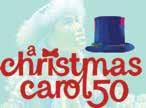


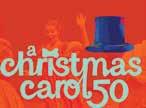
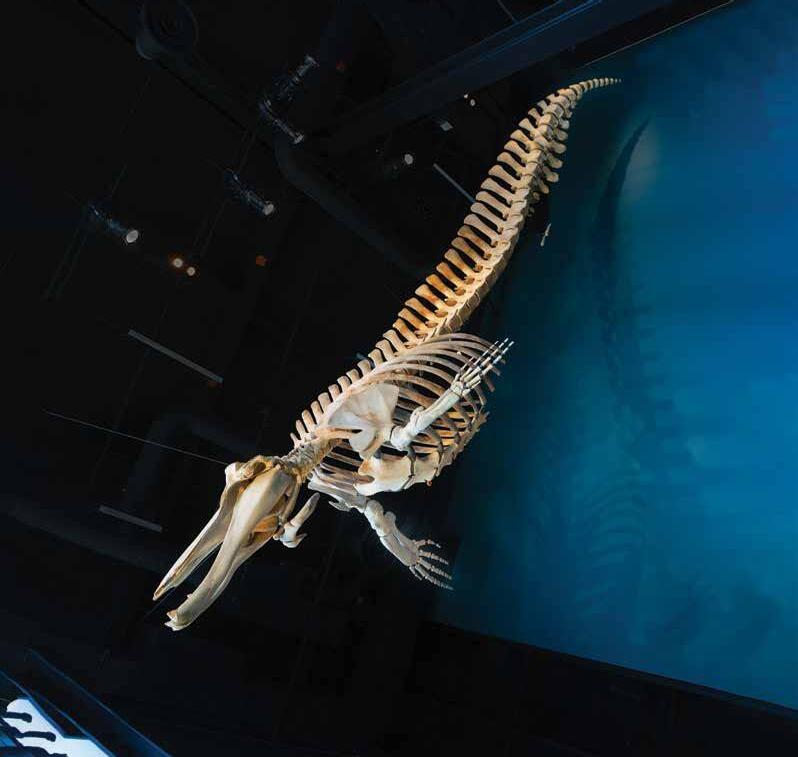



for



Join us for some winter fun in Downtown Olympia! Hours, tickets, and more information at olyonice.
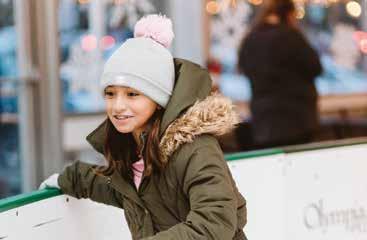
Get outdoors and enjoy the coast with your family. Razor clamming is a fun activity for all ages and requires little gear. All you need is a license (for those over 14), a clam shovel or clam gun, and a bucket.

family! Learn more about upcoming razor clam dig dates, how and where to harvest, and more!
wdfw.wa.gov/fishing/ shellfishing-regulations/razor-clams
Request this information in an alternative format or language at wdfw.wa.gov/accessibility/requests-accommodation, 833-885-1012, TTY (711), or CivilRightsTeam@dfw.wa.gov.


continued from page 18
appearance during our trip (sadly they didn’t because it was too cloudy), this is where we’d go to witness their spectacular show.
Endless entertainment
If the Lido Deck is the outdoor hub, the Piazza is the indoor hub of ship life. Head there during downtime and you’re sure to find something entertaining going on — from staff-led towel folding workshops and bartending competitions to dance parties, live music performances and puppy-petting experiences (it’s called Puppies on the Piazza and it’s as cute as it sounds).
Stroll the Promenade Deck from bow to stern on any given day and you’ll happen upon art auctions, trivia, games and more. What I appreciated about each is that you could often join in mid-stream or duck out if something else caught your eye. My oldest daughter and I left our mini facial session when the captain announced whales off the port side. And my youngest and I unintentionally ended up touring the ship’s galley and meeting the head chef because we followed a crowd; I’m so glad we did.
What struck me about the thoughtfully planned activities is the way Alaska was infused into many of them. Lectures on its environment and ecology were plentiful, and two Iditarod racers, including 2023 winner, Ryan Redington, gave talks and signed autographs for fans.
Expect to find everything from musicals to comedy acts in the Princess Theater each night. And the Vista Lounge often hosted teen events or after-hours entertainment that went on long past my kids’ bedtime. We were impressed by the many shows we saw.
Bottom line
I wasn’t sure what to expect as we made our way to Pier 91, but after disembarking for the final time, my kids and I were sad to leave the Discovery Princess behind. What made this
particular family vacation so enjoyable was that it was about both getting there and the amazing destinations we experienced when we did. It was a tasting flight of Alaska’s best offerings paired with the comforts of a luxe resort, and it left us wanting more.
While cruising may not be for everyone, it offered us the ease of an all-inclusive or Disney-style vacation, freeing everyone up to focus on simply having fun and spending time together as a family. We’re already planning our next cruise.
The Alaska cruise season runs from May through September, with June, July and August considered peak sailing months, thanks to the warm weather and abundance of wildlife to see in summer. If you sail during peak season, expect higher prices and more crowds in ports.
We sailed in early July and didn’t feel overwhelmed by people in the port towns, but we were often simply passing through on our way to an exciting excursion. I recommend having a planned activity in each port to get the most out of the experience. Excursions start around $100 per person, but can go as high as $1,500. Most are between $200–$400 per person.
If you’re considering an Alaskan cruise with kids, start with the experiences. While you can always find something to do in port, some excursions have age restrictions, limiting your selection. Extreme adventures such as zip lining and UTVing are best for tweens and teens. Sightseeing and wildlife viewing can work well for kids of any age. Hiking, canoeing, fishing and cultural experiences are great for kids in the elementary age range. But with all things kids, you know your kids and what they can handle best.
Allison Sutcliffe is ParentMap’s managing editor.
Editor’s note: This trip was hosted by Princess Cruises, but all opinions expressed here belong to the writer.













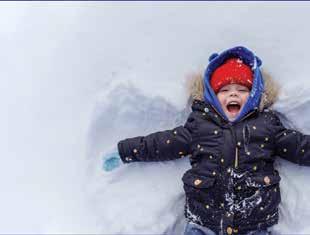


By Krista Tsai

Gather your friends and family (or your date!) as you wander immersive light displays, get lost in mesmerizing sparkles, or even take your adventure to new heights that are worth the drive to Canada. These extended winter light displays brighten up the nights of our dark and gray winter. Two of these are free to visit — a major bonus during an expensive season. Dress for the weather and expect to delight in the sights, sounds and experiences that await you in the Seattle area and beyond.
Astra Lumina, Seattle
Astra Lumina invites us to experience what it might be like for the stars to come down to us. Stroll through the botanical garden on a magical mile-long night walk, complete with special projections, lighting and music. This traveling exhibit has enchanted over 1.5 million visitors and a new edition is coming to Seattle.
While we haven’t compared last year’s edition to this year’s yet, our group with five children ages 3 to 8 thoroughly enjoyed the experience. In fact, the adults had to ask the kids to slow down as they ran with anticipation to discover each of the nine thematic areas. We found the walk to be a fun escape into nature with mesmerizing celestial elements.
Our kids loved dancing in the forest of Stardust Rays, walking beside the Rise of the Stars as they shot back up to space, and climbing the switchbacks of the Celestial Trail covered in twinkling, colorful stars illuminating the hill. While our visit was quick — only an hour — it was an enjoyable experience for all of us.
Parent tip: While strollers are allowed, using a carrier for
courtesy of Woodland Park Zoo
continued from page 23
young children will be easier as the terrain in the garden can be uneven and narrow. Paths can be muddy after rain. We visited on a rainy night and wore rain boots, which worked well.
Dates: Nov. 6, 2025–March 1, 2026
Location: Seattle Chinese Garden, 6000 16th Ave. S.W., Seattle
Cost: Tickets cost $22–$39 per person. Children younger than 4 are free.
Capilano Bridge Lights, Vancouver, BC
Pack up the car and take a short road trip (just under three hours) to walk across the breathtaking 450-foot Capilano Suspension Bridge, and explore one of nature’s most fun “playgrounds” at the Treetops Adventure once you cross the bridge. My kids love running across the seven suspension bridges interconnected to treetop platforms, 110 feet off the ground. Thrill-seekers will also enjoy the Cliffwalk, providing another gorgeous vantage point 30 stories above the Capilano River Canyon. The added seasonal lights from November through February make this destination even more magical. Plan to spend at least two to three hours here.
Parent tip: Strollers, wheelchairs and shoulder carriers are not allowed on the Capilano Suspension Bridge, Treetops Adventure and Cliffwalk. Plan to use a front carrier for babies across the bridge.

Dates: Canyon Lights, Nov. 21, 2025–Jan. 18, 2026; Love Lights, Jan. 30, 2026–Feb. 22, 2026.
Location: 3735 Capilano Rd., North Vancouver, BC, Canada
Cost: Tickets cost $18–$53 per person; free for kids 5 and younger.
This November, WildLanterns returns to Woodland Park Zoo with an all-new (and larger than ever!) set of illuminated creatures. Stroll through four different themed sections with de-light-ful scenes from the woodland Pacific Northwest on the “Wonderland Trail,” a world of reptiles and fish in the “Meandering Mangrove,” blooming flowers in “Beneath the Blossoms,” and a lantern version sneak peek of the Forest Trailhead, a new exhibit opening in 2026.
Interactive zones sprinkled throughout act as creative diversions for children and kids at heart to burn some energy and have some fun! A king cobra with a vibrant coiled tail, a pair of glowing musk oxen and cheerful red pandas are just a few of the enchanting creatures that will brighten up your night.
Parent tip: We like to visit in January or bundle up on a cold or rainy night when it’s less crowded but still just as fun!
Dates: Nov. 14, 2025–Jan. 18, 2026


Location: Woodland Park Zoo, 5500 Phinney Ave. N., Seattle
Cost: Tickets cost $28–$41. Kids ages 0–2 are free.
Tulalip Lights and Ice by Quil Ceda Village, Tulalip
If you’ve ever driven through Tulalip on I-5 between November and January, you’ve likely spotted Washington’s largest holiday lights display. While the vibrant display is impressive to see as you drive by, there are enough things to see and do to warrant a visit. Bundle up and walk around as you take in each tree wrapped in solid bright colors, totaling over 7.8 million lights. A real ice rink, fire pits, local food and gift vendors, and scheduled dates to visit Mr. and Mrs. Claus also await. Each year, Tulalip Lights and Ice builds upon its display and switches up the lighting designs to give visitors something new to enjoy.
Parent tip: While the weekdays won’t have as many activities and limited vendors choose to stay open, it’ll be less crowded (with less traffic) if you visit during the week. Hot chocolate and the ice-skating rink are available daily.
Dates: Nov. 22, 2025–Jan. 11, 2026

Bundle up and pack your sled for the small sledding hill next to the gazebo!
Location: Tulalip Amphitheatre, 10400 34th Ave. N.E., Tulalip Cost: Free to enter. Ice-skating, food and drinks are available at a cost.
From Thanksgiving through February, the quaint Bavarian village of Leavenworth is transformed into a glowing winter scene. Front Street Bavarian storefronts and restaurants are dusted in snow and blanketed in over half a million lights. After Thanksgiving and through Christmas Eve, the downtown gazebo of “Christmastown” hosts free live music, strolling carolers, and you might just bump into Christmas characters like Santa and Mrs. Claus.
In January, celebrate Leavenworth’s Winter Karneval with live ice carving (Jan. 17 and 18), fireworks over downtown (Jan. 18 at 6 p.m.), and fire dancers (Jan. 10 and 11). In February, the lights still shine bright but will have a Valentine’s Day flair.
Parent tip: January and February are less busy times to visit but still have all the magic of the lights and snow. We enjoy eating at the authentic German restaurant, Andreas Keller Restaurant. While popular and busy, it sometimes offers an online waitlist.
Dates: Nov. 27, 2025–Feb. 28, 2026
Location: Front Street Park, 820 Front St., Leavenworth Cost: Free
Krista Tsai is a Seattle-area mom of three. Since having her third child, she has taken a break from clinical social work to stay home. She is determined to teach her children her love of biking, skiing and the beach. You can follow her family’s adventures, travel tips and travel hacking on Instagram: @mamabearintheair


By Gemma Alexander

If you’re like me, you obsessively read about families who take a year off to travel around the world. But for a myriad of reasons, that round-the-world plane ticket might as well be a castle in the sky. Still, now more than ever, it’s important for our kids to develop a global perspective and deep respect for cultural differences. While there’s no substitute for international travel, we shouldn’t ignore the multicultural resources our own region has to offer.
For families living in Washington, I’ve put together a roundthe-world itinerary with local cultural stops for Europe, Africa, Asia, Oceania and South America. But thematically mixing and matching activities and destinations can be just as interesting and may produce insights you’d never discover if you stick to the plan.
As you put together your own itinerary, remember that many resources are valuable for multiple destinations. Woodland Park Zoo and Seattle Art Museum have several geographically focused collections. The Seattle and King County public libraries offer cultural story times and global folktale collections. And if your kids are old enough to read, consider watching subtitled movies to immerse yourselves in the sounds of your destination’s language.
Visiting grocery stores abroad can provide a delightful glimpse into everyday life in another culture. Bring a taste of Europe home from the Paris-Madrid Grocery, which carries specialty
foods “from both sides of the Pyrenees.” Stock up on French cheese and charcuterie, Spanish olives and turrón.
You can experience the vibrant, intense tradition of flamenco through both touring and local performances. Visit the Seattle Flamenco Community Facebook page to stay up to date on performances, or consider taking a class; most local performers offer lessons. Semilla Flamenca hosts familyfriendly performances and flamenco classes for students as young as 3; American Dance Institute also offers classes for youth and adults. Find more opportunities to explore Spanish culture at the Cervantes Institute.
For a Spanish movie night, watch “Zip & Zap and the Marble Gang.” Based on a long-running Spanish comic, it follows troublemaking twins to boarding school, where they oppose the school’s tyranny with pranks. Or try “Las Aventuras de Tadeo Jones” (“Tad, the Lost Explorer” in English releases) about a bricklayer who accidentally gets a chance to pursue his dream of becoming an archaeologist.
Cervantes Institute: Padelford Hall, University of Washington; online resources available.
Paris-Madrid Grocery: 1418 Western Ave., Seattle; open daily.
Africa is best known for its wildlife, and Ethiopia and Eritrea include ecosystems that range from alpine to coastal. At Woodland Park Zoo, you can visit the lions (Ethiopia’s national
continued from page 27 animal) along with the warthogs, zebras and patas monkeys in the African Savanna, find a prickle of African crested porcupines in the former hippo habitat and discover whitecheeked turaco, snowy-crowned robin-chat, speckled mousebird, African pygmy-goose and more in the Savanna Aviary.
Robust local Ethiopian and Eritrean communities mean that we have numerous excellent Ethiopian restaurants, with a particularly dense cluster centered on East Cherry Street in the Central District. Delish in Hillman City introduces the Amharic alphabet and pronunciation alongside its tasty menu.
At Seattle Art Museum look for Ethiopian-born artist Julie Mehretu’s contemporary drawing, then visit the African art collection on the fourth floor to find Ethiopian jewelry and religious art dating as far back as the 13th century. This summer teens from Urban ArtWorks Studio designed and painted pillars near the Stadium Light Rail Station. Look for the one that includes a jebena, used to brew traditional Ethiopian coffee, then take the train to Northgate to visit Jebena Market, which carries Ethiopian groceries, traditional clothing, housewares, artwork and more.
Sign up for a free trial of Sodere Ethiopian Movies and check out the kids section – subtitles are available for many of the videos.
Delish Ethiopian Cuisine: 5701 Rainier Ave. S., Seattle; open Wednesday–Monday.
Woodland Park Zoo: 5500 Phinney Ave. N., Seattle; open daily. Jebena Market: 1510 N.E. 117th St., Seattle; open Thursday–Tuesday.
Now boarding for Asia! Destination: Pakistan
A special exhibition at the Seattle Asian Art Museum gives us a chance to travel the ancient Silk Road and stop in contemporary Pakistan. On display through April 19, 2026, “Geometry of Light” presents the work of Anila Quayyam Agha, whose immersive works draw on Islamic design traditions. Born in Pakistan and now based in the U.S., Agha uses the contrasts between light and shadow and between hard and soft materials to explore the gender discrimination she faced in Pakistan, and the ethnic discrimination she faces here. After the museum, head down the hill for a halal lunch at Mirch
Masala (formerly known as Ammi’s Pakwan) or continue traveling East on the Silk Road to Annapurna Café for food from India, Nepal and Tibet.
Back home for movie night, you could opt for the 2018 animated Pakistani movie, “The Donkey King,” in which a donkey is elected to replace the retiring lion king of Azad Nagar. “The Glassworker,” with its Ghibli-inspired aesthetic, is the first hand-drawn Pakistani film. An English-dubbed version was in theaters at press time, and with luck, it will be available for home viewing soon.
Seattle Asian Art Museum: 1400 E. Prospect St., Seattle; open Wednesday–Sunday.
Mirch Masala: 213 Broadway E., Seattle; open daily. Annapurna Café: 1833 Broadway, Seattle; open Tuesday–Sunday.
Now boarding for Oceania! Destinations: Polynesia and Hawaii Start your day with savory pastries from Hood Famous Bakeshop (and pick up an ube cheesecake to eat at home later) before visiting the Wing Luke Museum. Their “DISplace” exhibit features art by Native Hawaiian artists. “Lost & Found: Searching for Home” explores the relationship between place and belonging through the lens of Asian American, Native Hawaiian and Pacific Islander identity.
Look for Tahitian (ʻOri Tahiti) and hula dance workshops and classes from groups like Huraiti Mana and Sunshine from Polynesia. Head toward Federal Way for plate lunch at Pac Island Grill before stocking up at Asian Pacific Market and Bombay Fiji Bazaar in Kent. Venture to Tacoma for dinner at Taste of Samoa or back to Seattle for a stop at Hawaii General Store before eating at Kona Kitchen (owned by actor Yuji Okumoto).
In the evening, you could watch “Moana” or “Lilo & Stitch” again, see Okumoto as the dad in the 1999 film “Johnny Tsunami” or see Taika Waititi’s little-known “Boy,” about an 11-year-old Māori boy connecting with his absentee criminal father (recommended for ages 12 and older; check the content advisories).
Wing Luke Museum: 719 S. King St., Seattle; open Wednesday–Sunday.
Asian Pacific Market: 25644 104th Ave. S.E.; Kent, open daily. Bombay Fiji Bazaar: 24700 36th Ave. S., Kent; open daily. Hawaii General Store: 258 N.E. 45th St., Seattle; open daily.
Now boarding for South America! Destination: Brazil
Have a refreshing açaí bowl or indulge in pão de queijo (cheesy bread made with tapioca flour) at Kitanda. Then attend a free monthly roda hosted by the Seattle Capoeira Center or Tacoma Capoeira Center and experience the music, movements, games and history of the Afro-Brazilian art form that combines martial arts, dance, music and philosophy. If you enjoy the experience, become part of the community with their classes for kids and families.
Several studios in the region offer classes in Brazilian dance styles like samba, carimbó, and zouk. But if you’re not ready to commit to regular classes, check out this online carimbó workshop from Dance with Dora and have a dance party at home. Be sure to serve brigadeiros (you can get them at Kitanda or try making your own).
Soccer (futebol in Portuguese) is Brazil’s national sport. Find a Campeonato Brasileiro Série A game on cable or streaming for inspiration, then head outside to pretend you’re Bruno Guimarães. Have dinner at a Brazilian steakhouse; try the Full Churrasco Experience at Fogo de Chão, where children 6 and younger eat free, and ages 7–12 dine at half-price.
Watch the 2013 Brazilian animated film “O Menino e o Mundo” (“The Boy and the World”), about the adventures of a boy who leaves his village to follow his father who works in the city, or look for any of the “Monica and Friends” movies or TV series (“Lessons” is currently available on Amazon Prime).
Seattle Capoeira Center: 2909 Rainier Ave. S., Seattle; roda is on fourth Sundays at 3:15 p.m. Tacoma Capoeira Center: 755 Broadway, Tacoma; roda is on second Fridays at 6 p.m. Fogo de Chão: Locations in Seattle, Bellevue and Lynnwood.
Wherever you go, you’re not just filling a winter weekend. You’re expanding horizons, making memories and raising kids who see the world as interconnected — without the jet lag.
Seattle-based freelance writer Gemma Alexander focuses on the intersection of parenting and the arts.



Story and photos by Krista Tsai
If your kids could dig all day and never want to leave the beach, then The Sand Garden in Issaquah may become a new favorite spot to visit. Rain or shine, the indoor sandboxes are open. While kids may think that they’re just having fun playing in the sand, parents will appreciate the sensory-rich environment that is beneficial for brain development, language skills, fine and gross motor skills, and social skills. Plus, it’s calming for all!
An indoor play space designed by parents Graham and April Quinn, local parents who also grew up in the Seattle area, have been dreaming about creating The Sand Garden since their now 2-year-old was a baby. Graham Quinn has always found going to the beach and sand between his toes to be relaxing. And while the Quinns love the rainy months of fall, winter and spring, they realize it can be tricky to get out of the house with kids during inclement weather and it can be hard when you feel stir-crazy stuck at home. The Quinns wanted to create another indoor play option for families to gather, play and grow.
With a background in education, April Quinn values the rich sensory play that The Sand Garden offers and hopes to drive “play learning” through building various programs to enrich learning experiences and foster community — fossil digs and toddler meet-ups are some ideas. Graham Quinn is entertaining the idea of a March Madness basketball “Watch and Play” event. (Information on future events will be shared on The Sand Garden’s website and social media pages.) While the Quinns live in Snoqualmie Ridge, Issaquah has been their go-to spot since moving there. They are excited to be among the community of friends and businesses that they love here in Issaquah.
Our experience at The Sand Garden The Sand Garden opened on Sept. 15, and my 4-year-old
and I met our friends there for a playdate. After removing our socks and shoes, we entered the gated play area and bounced back and forth between the two sandboxes.

Children can spread out with two large sandboxes totaling 1,400 square feet of sand. Parents and caregivers can either join in on the fun, sit on the benches that border the sandboxes, or take a moment to drink hot (and complimentary!) coffee in the café-like seating area in between the two sandboxes. If you want a specialty coffee drink, you can stop by the drive-through of Top Pot or Starbucks on your way — both are within a mile of The Sand Garden.
My daughter and her friends enjoyed playing together at the market stand, scooping “ice creams,” building with the foam bricks and wood, and sliding with a sandy soft landing. Another hit was scooping, raking and sifting the sand with the various sand tools. Truck lovers will enjoy the hefty lineup of Tonka trucks and sit-on excavators.
We found The Sand Garden calming for all of the senses — soft instrumental background music plays, the sand is powdery soft high-quality play sand (not like our beaches here), and kids generally play more quietly with sensory activities like this. Natural light floods the front of the space, which is primarily windows. The greenery and central olive tree (one of the Quinns’ favorite features) wrapped with fairy lights add to the calming atmosphere and tasteful aesthetic.
The perimeters of the sandboxes are topped with deck bench seating — convenient for parents and caregivers to sit back with their feet in the sand and chat while their kids play nearby. Take a snack break, sip your coffee, or catch up on some work using the free Wi-Fi in the eating area, which includes child-size picnic tables. All seating areas have
excellent sight lines for watching your children play. The Sand Garden welcomes outside food (snacks only) and drinks but also has several packaged snack options for purchase, such as Goldfish and applesauce pouches. Cold waters, sparkling waters, juice boxes and canned soda are also available for purchase.
On our visit, we only had time to stay for an hour of play time but my daughter tried to extend our time by bargaining for “one more minute” and “one last thing.” You’ve been warned — it might be hard to leave!
While my older sons, ages 6 and 8, weren’t able to join us I think they’d enjoy digging, building, and the calming effects of sensory play. However, I think my daughter, being 4 years old, could stay occupied at The Sand Garden longer than my older boys. As I watched a 2-year-old boy completely absorbed with a dump truck and sand, I reminisced about the days when my toddler boys were also preoccupied with all the trucks and cars — they would have been in heaven at The Sand Garden at that age!
The sandboxes stay clean by daily raking and sifting of the sand, wetting the sand to help reduce dust particles, and spraying the sand with a water and vinegar-based solution to prevent odors and bacteria from growing. Toys are sanitized daily. Sand dust particles are also minimized with air purifiers. Two bathrooms are close by, and one of them has a changing table.

The Sand Garden has a spacious and bright private room available for parties: Beau’s Shed, lovingly named after their family dog. Party packages start at $399 for up to 10 children and include reserving the private room for two hours and
full access to the sandboxes. You can also reserve a private sandbox for your party. Parties must bring their own food and drinks.
When you’re ready for a few peaceful hours in the sand, drop in during open hours. No reservations are needed but The Sand Garden will start a waitlist when it hits the capacity of 30 kids in the play area. When you arrive, you’ll sign a waiver, and everyone will be asked to store their shoes and socks in the cubbies. No outside toys are allowed in the sandboxes.
The Quinns hope that your kids love it just as much as their son — an avid digger who loves crawling in the sand, moving the sand about and digging as deep as he can. While he has some of his favorite toys both at The Sand Garden and at home, everything is more fun when sand is involved. The Quinns desire to bring families together and build a strong community as we all slow down, put our feet in the sand and connect at The Sand Garden.
Location: The Sand Garden is located at 600 N.W. Gilman Blvd., C-2, Issaquah.
Hours: The Sand Garden is open daily from 9 a.m.–5 p.m.
Cost: Unlimited play costs $22 per kid, per day. Two adults per family can enter free of charge; each additional adult will cost $5. Kids younger than 1 year old are free.
Ages: Open play is for ages 0–10 years old.
Parking: There is free parking in the parking lot right outside The Sand Garden.
Amenities: The Sand Garden has free Wi-Fi and bathrooms with one changing table. The eating area has a microwave, complimentary drip coffee, and prepackaged snacks and non-alcoholic beverages for purchase.
Krista Tsai is a Seattle-area mom of three. Since having her third child, she has taken a break from clinical social work to stay home. She is determined to teach her children her love of biking, skiing and the beach. You can follow her family’s adventures, travel tips and travel hacking on Instagram: @mamabearintheair















